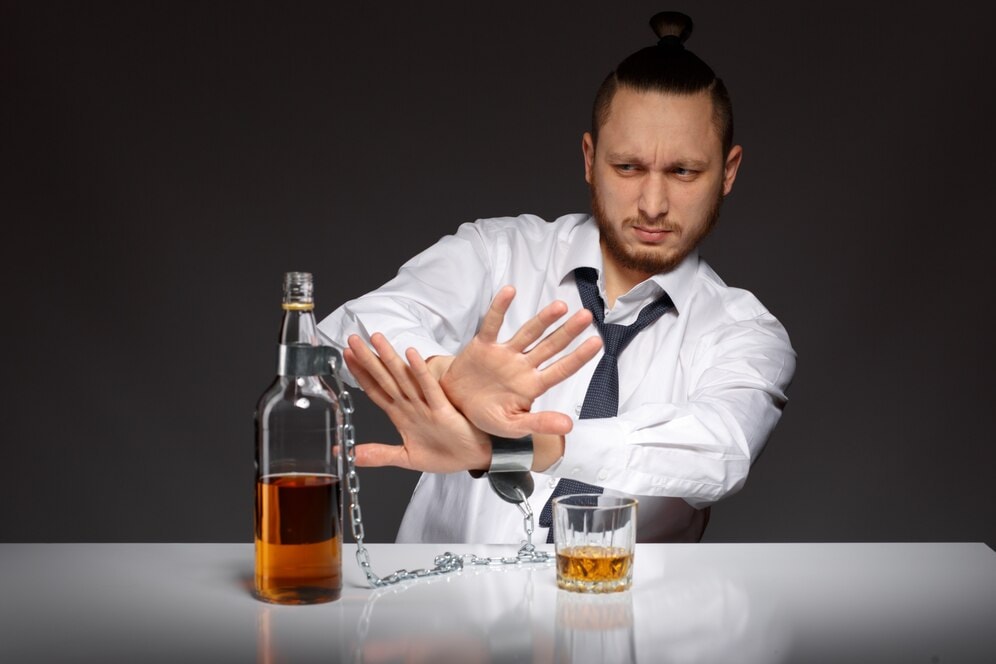If you’re looking for practical steps on how to quit drinking alcohol, you’ve come to the right place. Our comprehensive guide provides effective strategies, medical advice, and support options to help you quit safely and for good.
Key Takeaways
- Effective alcohol cessation requires a combination of behavioral therapies, medications, and support groups for enhanced success rates.
- Quitting alcohol without professional help can lead to severe withdrawal symptoms and health risks; medical supervision is recommended for those at risk.
- A structured step-by-step plan, including goal-setting, removing triggers, seeking support, and engaging in healthy habits, significantly increases the likelihood of successfully quitting.
What is the best way to quit drinking alcohol?
Quitting alcohol most effectively involves a mix of behavioral therapies, medications, and mutual-support groups. Research indicates this comprehensive approach significantly boosts success rates by providing structure and support.

Most effective treatment combinations
Pairing behavioral treatments with medications often leads to better outcomes for those aiming to quit drinking. Therapies like cognitive-behavioral therapy (CBT) help individuals avoid triggers and manage cravings by changing thought processes linked to alcohol use.
FDA-approved medications like naltrexone, acamprosate, and disulfiram help individuals reduce or quit alcohol. Mutual-support groups like Alcoholics Anonymous offer vital peer support, enhancing the effectiveness of professional treatment.
Who needs medical support to quit?
Individuals with a history of severe withdrawal symptoms or other health conditions often need medical support for their medical condition while receiving treatment. Those with severe alcohol dependence might require medical supervision to manage withdrawal safely.
Professional medical help is vital for those at risk of severe health complications during withdrawal, as a doctor can provide essential support.
Can you stop drinking without rehab?
It’s possible to quit drinking without formal rehab, but success often hinges on individual circumstances and support systems.
Comparing home recovery to inpatient or outpatient rehab highlights the effectiveness, safety, and relapse rates of each approach.
Self-quit methods that work
Gradual tapering, online therapy, and telehealth services for medications are effective at-home strategies for quitting drinking. Gradual tapering helps the body adjust slowly, lessening withdrawal symptoms.
Online therapy platforms connect individuals with licensed counselors for support and guidance. Telehealth services can prescribe medications to manage cravings and withdrawal symptoms, easing the quitting process.
Risks of going it alone
Quitting alcohol without professional help can cause severe withdrawal symptoms and health risks, including:
- Seizures
- Delirium tremens, which are life-threatening
- Dehydration
- Electrolyte imbalances
Abruptly stopping alcohol can pose serious health risks. If you want to improve your well-being, it may be time to stop drinking alcohol.
Malnutrition, often seen in those with alcohol addiction, can result in significant deficiencies, such as thiamine deficiency leading to Wernicke-Korsakoff syndrome.
Step-by-step plan to quit drinking alcohol
A structured approach to quitting drinking greatly improves success rates. This step-by-step treatment plan guides you from the decision to long-term maintenance.

Step 1: Make the decision and set goals
Deciding to quit drinking is an important first step. To support this process:
- Set smaller, achievable goals to boost motivation and lower relapse chances.
- Identify reasons for drinking to help shape the decision to quit.
- Find alternative ways to meet those needs.
A pros and cons list can clarify the benefits of reducing or stopping alcohol consumption. Setting practical short-term and long-term goals is key to reducing or eliminating alcohol intake. Engaging in new activities can help break the drinking habit and establish new routines.
Step 2: Remove alcohol triggers
Removing environmental and emotional triggers that lead to drinking is crucial for maintaining sobriety. This means avoiding people, places, and habits associated with alcohol use.
Step 3: Seek medical guidance
Consulting a physician or addiction specialist can assess withdrawal risks and treatment needs, offering a tailored approach to quitting.
Step 4: Build a support network
Building a support network with friends, family members, or support groups can offer crucial encouragement during the quitting process. Groups like Alcoholics Anonymous and Al-Anon provide valuable resources for individuals and their families who want to learn how to help someone with alcohol addiction.
Step 5: Use medications if prescribed
Medications can help manage cravings and withdrawal symptoms, making quitting more manageable. The FDA has approved alcohol addiction medication such as disulfiram, naltrexone, and acamprosate for treating alcohol dependence.
Medications used in treatment include:
- Naltrexone: reduces cravings by blocking opioid receptors and decreases relapse rates when combined with psychosocial treatments.
- Acamprosate: helps maintain abstinence by modifying neurotransmission.
- Disulfiram: less favored due to low compliance rates and limited evidence of its effectiveness.
Step 6: Replace drinking with healthy habits
Engaging in new, healthy ways activities like exercise, new hobbies, journaling, and mindfulness can create a fulfilling sober lives style.
Step 7: Monitor progress and adjust
Tracking progress with digital tools or professional guidance is vital. Adjusting plans after setbacks ensures continuous improvement and long-term success.
What withdrawal symptoms should you expect?
Withdrawal symptoms can appear within six to twenty-four hours after cutting back or stopping alcohol intake. These symptoms can range from mild to potentially life-threatening.
Knowing this timeline is crucial for anyone planning to quit drinking.

Common symptoms and when they occur
Withdrawal symptoms after stopping alcohol can be categorized by timing and severity:
- Mild symptoms (e.g., headaches and anxiety) can start six to twelve hours after the last drink.
- Severe symptoms (e.g., hallucinations and seizures) may appear between twenty-four to seventy-two hours after stopping alcohol.
- Withdrawal symptoms usually peak within the twenty-four to seventy-two hour period.
Seizures are most likely within 24 to 48 hours after the last drink in severe withdrawal cases. Some may experience prolonged symptoms like mood changes and insomnia, lasting weeks or even months.
Medical detox and inpatient care
Severe alcohol withdrawal often requires hospitalization and continuous monitoring due to potential life-threatening complications. Inpatient care involves administering medications like benzodiazepines to manage symptoms and prevent seizures.
Multidisciplinary teams provide a range of services, from medical management to psychological support.
What tools and resources help you stay sober?
Online communities, educational content, and anonymous forums offer tools and resources for those aiming for sobriety. These can help maintain motivation and provide valuable guidance.
Apps for quitting alcohol
Apps like Sunnyside and Reframe help users track drinking habits and set personal goals for reduction or moderation. They offer features like daily tracking, motivational content, and community support to aid recovery.
Online therapy platforms
Online therapy platforms like BetterHelp and Talkspace connect individuals with licensed therapists for personalized counseling and support to overcome alcohol dependence.
These services offer flexibility and easy access for those seeking professional help.
Virtual and hybrid MAT providers
Medication-Assisted Treatment (MAT) providers like Monument Health and Workit Health offer virtual consultations, combining medication with behavioral therapy. Telehealth services for addiction treatment include video visits, phone consultations, and online therapy sessions, enhancing accessibility.
How long does it take to fully quit drinking?
Quitting drinking is a lifelong process, but major milestones like physical withdrawal and brain healing follow predictable timelines.
Knowing these timelines helps set realistic expectations for the alcohol recovery timeline and long-term recovery journey.

Recovery timeline
The body usually needs one to two weeks to fully adjust after quitting alcohol, with withdrawal symptoms peaking around 48-72 hours post-cessation. The timeline of symptoms and recovery is as follows:
- Initial symptoms like headaches and anxiety usually start within 12-24 hours after the last drink.
- Withdrawal symptoms peak around 48-72 hours after quitting.
- By the end of the first week, most physical symptoms resolve.
- Improvements in sleep and hydration become noticeable after the first week.
In the second week of sobriety, benefits continue to accumulate, including weight loss and improved gut health. By the third week, reduced blood pressure and cravings become apparent, along with significant savings from not buying alcohol.
After a month, improvements in skin and hair health, along with better overall physical health and well-being, are commonly observed.
Common challenges in quitting alcohol and how to handle them
Triggers for craving alcohol include stress, social situations, or environmental cues linked to drinking. Many individuals feel anxious about cravings and emotional trigger as significant obstacles to their desire for control.
Preparing for these challenges with practical coping strategies is key to maintaining sobriety.
What to do when you feel like drinking
Activities and strategies to manage the urge to drink include:
- Exercise
- Hobbies
- Deep breathing
- Engaging in physical activities
- Practicing mindfulness
- Keeping alcohol out of the home to reduce temptation during cravings.
Talking to a trustworthy friend during cravings offers support and talk accountability.
Navigating social situations without alcohol
Holding a non-alcoholic drink can reduce the chances of being offered alcohol. Most people informing friends and family about your decision to abstain fosters understanding and support. Additionally, having non-alcoholic drinks can help in social situations.
Setting boundaries and finding sober social alternatives are crucial for navigating social situations with a focus on avoiding alcohol.
When to seek professional help
Consider professional help for alcohol use when drinking continues despite negative consequences. Alcohol use disorder is diagnosed when a person shows two or more symptoms related to drinking behavior and alcohol abuse and alcoholism disorders. The institute on alcohol abuse provides resources for those seeking assistance with alcohol addiction.
Persistent symptoms of alcohol use disorder indicate a more urgent need for professional intervention.
Bottom Line: Quitting Alcohol
It is essential to reinforce the importance of each step in the quitting process. From making the decision to quit, removing triggers, seeking medical guidance, building a support network, using medications if prescribed, replacing drinking with healthy habits, and monitoring progress, each step plays a crucial role in achieving and maintaining sobriety. Remember, quitting alcohol is a journey that requires patience, perseverance, and support. Keep moving forward, and the rewards of a sober life will follow.
FAQs about quitting alcohol
Can I drink occasionally after quitting?
It's generally best to avoid any alcohol consumption after quitting to prevent relapse and maintain your path to sobriety. Being mindful of this can significantly enhance your recovery journey.
What happens if I relapse?
If you relapse, seek support immediately and reevaluate your treatment plan to regain control. An early response can reduce the risk of alcohol relapse. Taking swift action is crucial for your recovery.
Is quitting cold turkey dangerous?
Quitting cold turkey can indeed be dangerous because it may lead to severe withdrawal symptoms. It's advisable to seek medical guidance to manage the process safely.
How can I manage cravings?
To effectively manage cravings, engage in physical activities, practice mindfulness, and talk to a trusted friend. These strategies can provide support and distraction.
When should I seek professional help?
You should seek professional help if you find it difficult to control your drinking, especially when faced with negative consequences, or if you're experiencing severe withdrawal symptoms. Taking this step can be crucial for your well-being.
















